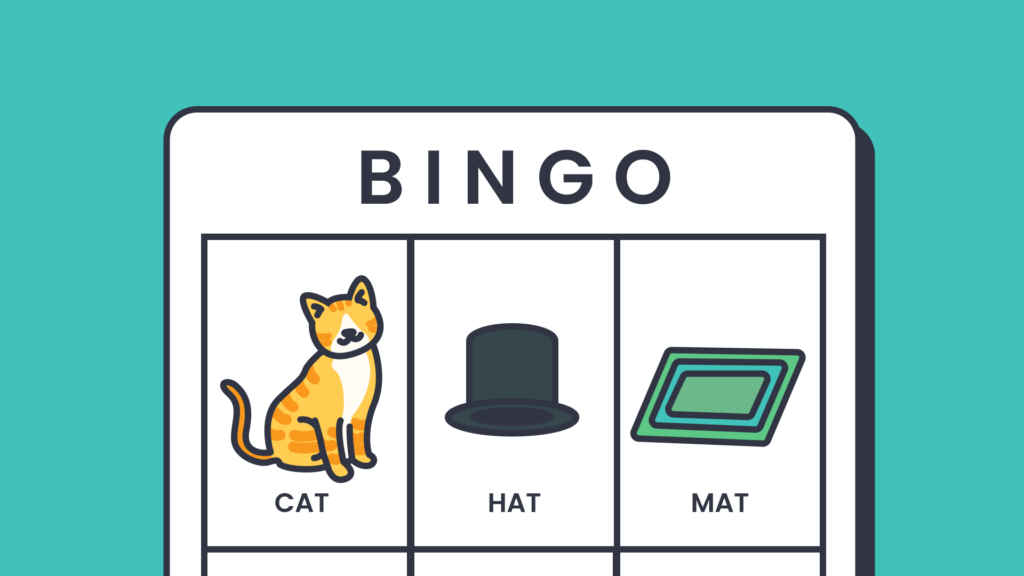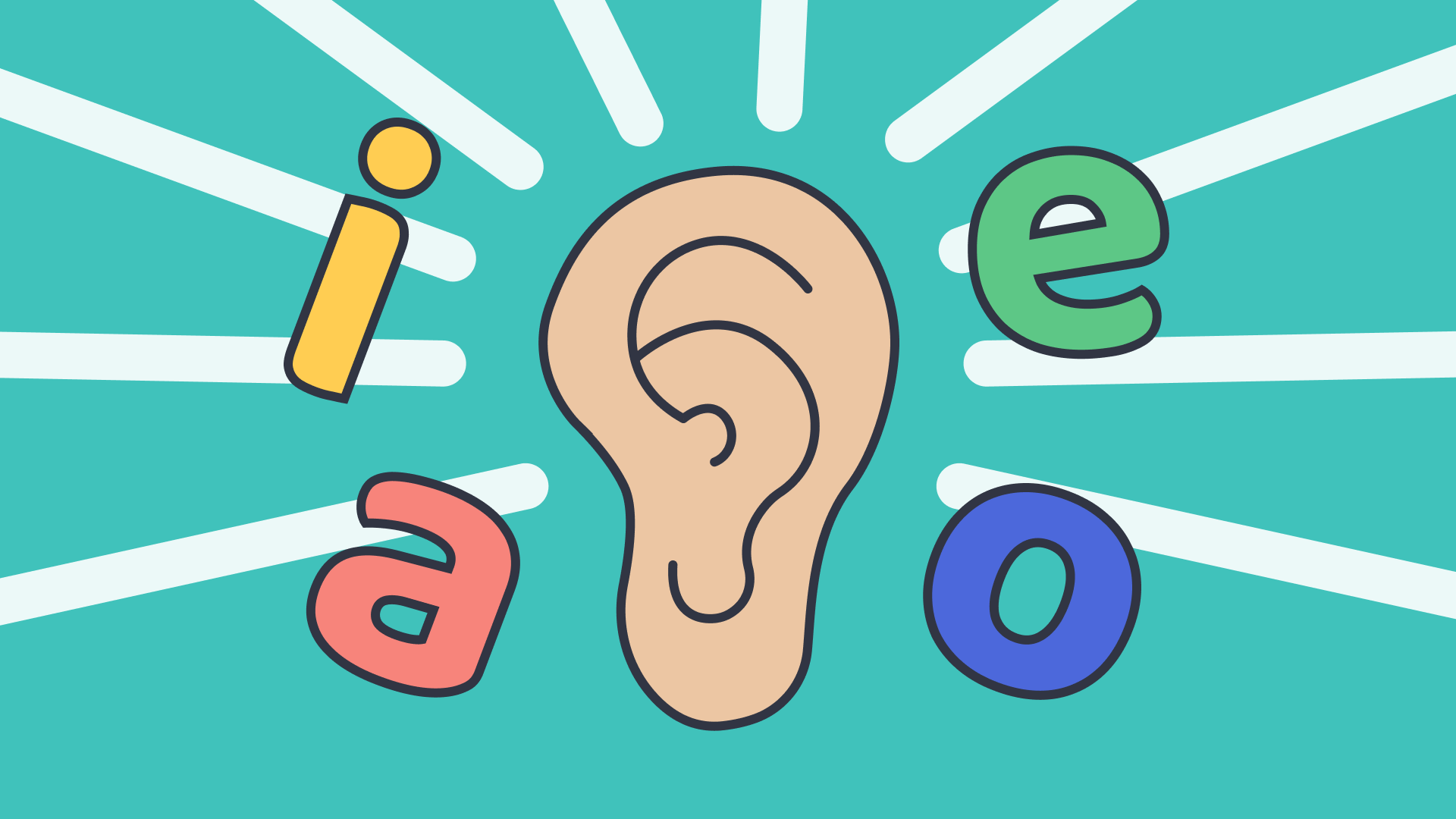6 Easy phonological awareness activities kids will love
In this guide
Phonological awareness is a critical literacy skill for early development and as teachers of early literacy learners, we are always looking for ways to make phonological awareness more engaging for our students!
Phonological awareness is “the ability to hear, recognize, and play with the sounds in spoken language”. Phonemes are the smallest unit of sound and are the building blocks of literacy instruction. These are the individual sounds in spoken word.
Phonological awareness activities apply a variety of skills students will need in order to become successful readers and writers.
The following activities are ones that can be facilitated as
- Whole-group instruction,
- Small group instruction,
- Centers or
- Individualized.
After students master the activities, consider bundling them to send home for families to work on phonological awareness at home!
1) Isolation activities
Phonological isolation activities require students to isolate each sound they hear in a word. In a three letter word, students isolate the first, middle, and last phoneme. This is an important developmental skill in early literacy. The following activities are fun ways to help students practice isolation!
Sound Safari
Materials
- Safari goggles, vests, or other props for students to use
- Picture cards with various animals or objects (cat, rat, bat, tree, etc.)
Instructions
Show the students a picture card. Ask the students to identify the sound they hear. For example, “What is the last sound you hear in ‘bat’? Encourage students to correctly say the phoneme out loud.
Repeat the process with different picture cards. Students can turn this activity into a game and go on a hunt to find objects that start or end with the same sound around the classroom.
What’s in the hat?

Materials
- A hat or bin
- Various objects to put inside of the basket that have different phonemic beginnings
Instructions
Remove an item from the hat one at a time. Allow students time to think about the beginning (or ending) sound they hear. Go around in a circle and have each student correctly identify the sound.
After students have identified the correct sounds, put all the objects back inside the hat. Then reverse the game by giving students a phoneme to find.
You might say, “find the object that begins with the /r/ sound.” Students can locate the object and take it out of the hat.
I Spy
Materials
- A tray or box of items with various starting or ending sounds
Instructions
Play “I spy” using phonemes and ask students to identify the object you are thinking of that begins or ends with a specific phoneme. After the teacher spies all the objects, allow students to take a turn spying on certain objects.
This activity can also be done with toys or objects students bring from home. Using treasured items from home adds a layer of social-emotional learning and identity work into phonological awareness.
Stretch it!
Materials
- Word cards or visual cards with three letter CVC words
Instructions
For this activity, students identify a word given on a visual card (or stated by the teacher). To isolate the middle sound they will use their whole body to ‘stretch’ apart the word.
Teach students their hands will act like a rubber band, stretching out when isolating the middle sound and snapping back together when saying the ending sound. A word like ‘big’ would start with their hands closed saying /b/ and stretching when saying the /i/ sound, then returning to close for the /g/ sound.
This helps students learn to isolate the middle sound of words which is usually a tricky task!
2) Segmentation activities
Segmenting a word is when students are able to identify each sound in a word and break them apart. They will be able to state each phoneme or sound represented in word in order.
Slime Stretch
Materials
- Slime, playdough, or clay (can substitute with string or yarn)
- A list of words using cards or visuals
Instructions
Say a word slowly, stretching out each sound. For example, /c/ /a/ /t/. Ask the students to repeat the word and stretch the sounds out with you. Start with simple three to four letter words and increase the difficulty as students are able to identify the phonemes.
As students stretch the words using their mouths, they will also stretch the slime or string that you provide. This whole-body learning will make a further impact on students as they practice segmentation.
Karate Chop Words

Materials
- Word list or visual word cards
Instructions
As students are presented with new words, they use their arm and hand to ‘chop’ each phoneme, or sound, they hear. To extend their learning, students can write the phonemes they hear after chopping them.
Find it!
Materials
- Word list or visual word cards
Instructions
Using simple pictures or visuals, segment words into each phoneme of sound. Then, ask students to identify the picture you are saying. For example, you might say /d/ /o/ /g/ and students would point to the picture of the dog.
With this activity, they are hearing segmentation being modeled in order to increase their ability to segment independently.
3) Blending activities
In order to blend sounds together, students need to know how to isolate and segment sounds in words. As they master these skills, they can start blending sounds together. Blending activities help students combine these individual sounds to form words.
Mystery Word
Materials
- Visual cards or objects students will recognize
Instructions
Say the sounds of a word slowly and pause between each sound. For example, /c/ /a/ /t/.
Ask students to blend the sounds together to say the word. In order to turn this activity into a game, students can pull out sounds or visuals from a bag and put them together to form a word.
Finger Puppet Blends
Materials
- Paper
- Animal or insect template or tracing guide
- Scissors
- Glue stick
Instructions
Help students create a small roll of paper that will fit around their finger. Glue the paper to create a small tube. Design a small animal that will stick onto the finger puppet.
Teachers coil cut out premade templates or students can create and draw their own. Glue the insect/animal to the tube.
The finger puppet becomes the student’s voice as they blend phonemes together. For example, say “Can your bumblebee create a word with these sounds, /r/ /a/ /g/?
4) Deletion activities
Deletion is a more advanced phonological awareness skill. Using deletion, students should be able to remove a phoneme from a word and replace it or add a sound to create a new word.
Ice Cream Licks

Materials
- Ice cream cone cut out
- Creative ice cream hats, aprons, or scoops
- Several words with each letter on a different ice cream scoop
- Example words: click, bread, slow, trip
Instructions
On each ice cream scoop write the letters to create different words. Stack the ice cream scoops on top of a cone and have students read the word by blending the sounds together.
Ask students to remove a sound such as /c/ from the cone by ‘licking it’ or taking it off the ice cream cone. Then ask students what word they’ve created by deleting or removing a sound.
Stop and Go
Materials
- Toy cars
- Notecards
- Tape
- Letters to spell words from word list on each car
Instructions
Create words from a word list by using a cut note card and tape to put on each car. Ask students to remove phonemes from certain words by having the toy car ‘drive’ away.
Ask students what word they created after removing the first or last sound from the word.
5) Substitution activities
When students use substitution in phonological awareness, they replace one sound with another, or ‘substitute’ phonemes. Being able to substitute sounds is an important part of early literacy development.
Sound Swap
Materials
- Picture cards, visuals, or objects from the classroom
- Game board with pieces for each student
Instructions
Create a gamified version of practicing substituting sounds. Start with a simple word like ‘car.’ Ask students to change the initial sound to make a new word, for example, /c/ becomes /b/.
Continue with different sounds and words. Challenge students to change words in a certain time frame and students can move along spaces on the game board every time they have a correct word.
6) Rhyming games
Rhyming is a foundational skill in phonological awareness and can be practiced in a variety of ways. Students can learn to rhyme using songs or memorization, but it is important to make sure students are accurately stating the sounds they are using.
Rhyming Bingo

Materials
- Bingo cards with pictures or words that are rhyming pairs
Instructions
Call out a word and have students cover the word or picture on their Bingo board that rhymes with that word. For example, state a word such as “hat” then have students cover words on their board such as “cat” or “mat.”
After students get 5 words covered in a row they will shout, “bingo.” These bingo cards can be made by students by providing them with a blank board and a longer word list.
This way teachers can ensure students will have the correct words on their Bingo card word list.
Rhyming Scavenger Hunt
Materials
- Teacher-created list of words or objects around the classroom that rhyme
Instructions
Create a list of rhyming pairs and hide one item from each pair around the classroom before students enter (or so that they are unable to see).
Give students a list of the initial items and tell them to find the matching pair. This list could be on paper or it could be actual objects they must identify then find the matching pair. For example, if they are given a “hat,” they could find “mat” or “cat” to complete the pair.
This could also be a race to see how many objects can be identified or who is the first to complete the list.
Rhyme Toss
Materials
- Small bean bag, stuffed toy, or ball
- List of teacher-created rhyming words
Instructions
Have students stand or sit in a circle in the classroom. Say a word and toss the ball or object to another student. The student then says a word that rhymes with the original word before tossing the ball to another student, who then continues the pattern.
For example, the teacher might begin with “cat” then toss the ball to the next student who says “bat.”
If students are ready for a challenge, choose more difficult rhyming words to begin and or time students to say a word very quickly when the ball is passed to them.
Use these activities in a variety of settings
Phonological awareness is a foundational skill for early literacy development. These activities can make learning about phonemes and sounds more fun and engaging in the early elementary classroom.
These playful exercises can be done in a variety of settings and are sure to help students develop strong phonological awareness skills that will make them more successful literacy learners.

Victoria Dotson
briefcase iconLiteracy Specialist
Victoria Dotson, an esteemed educator and professor in Chicago, Illinois, leverages her background as a Literacy Specialist to support multilingual learners and mentor preservice teachers. Victoria excels in developing literacy practices, promoting diverse literacy experiences in the classroom, and developing restorative curriculum.
Other posts
Want more content like this?
Subscribe for blog updates, monthly video releases, trending topics, and exclusive content delivered straight to your inbox.



















